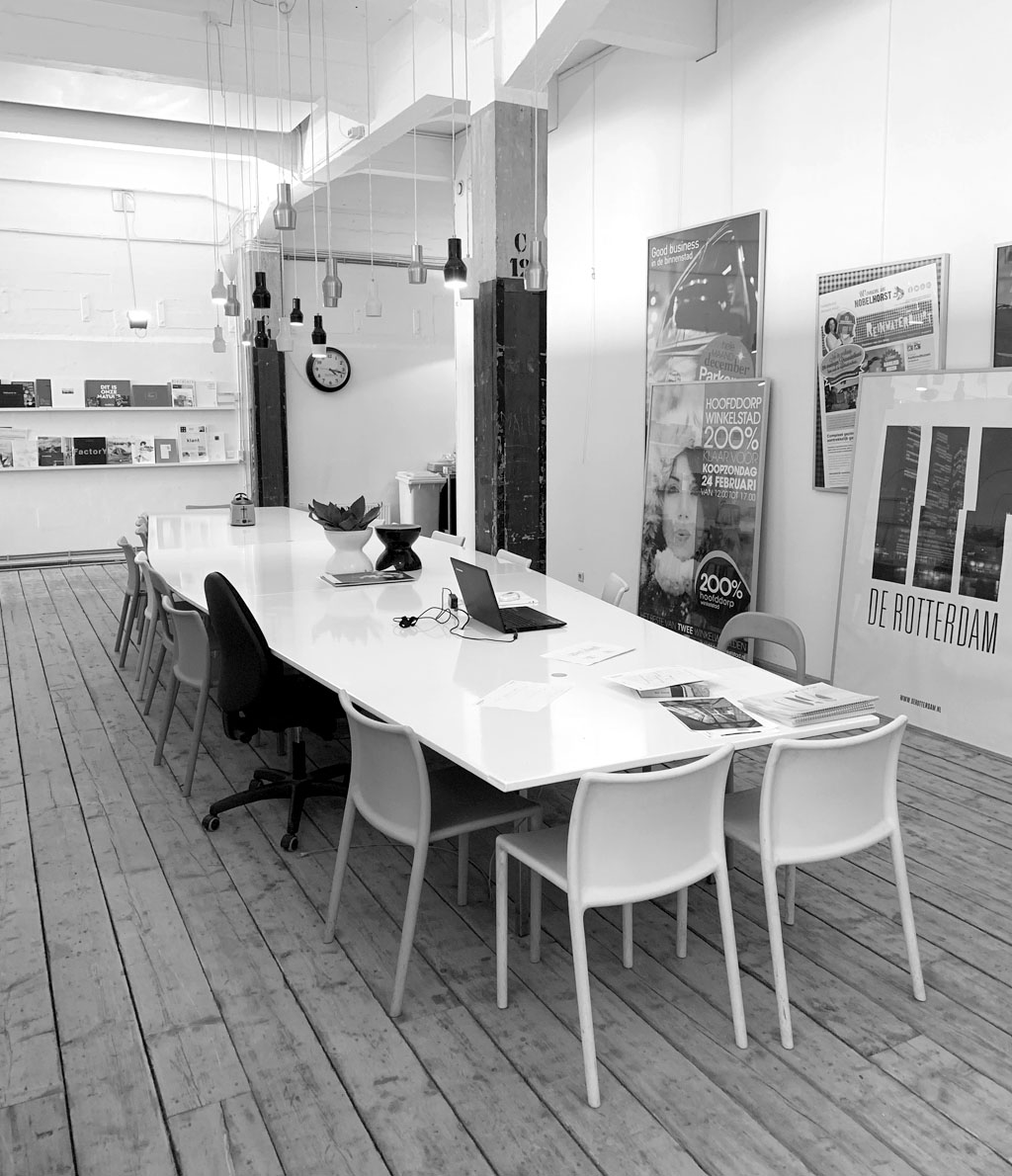15-02-19 // STAYIN’ ALIVE – INTERVIEW WITH FRITS VAN DONGEN

Interior of Frits Van Dongen’s newly founded “young Amsterdam-based office”
Bernd Upmeyer spoke with Frits van Dongen about “Late Life Urbanism”. Van Dongen is a Dutch architect, who was the Chief Government Architect of the Netherlands1 from 2011 until 2015. He studied architecture at Delft Technical University in the 1970s. In the 1990s he realized some remarkable housing projects, such as the “The Whale” in Amsterdam and “De Landtong” at the Kop van Zuid in Rotterdam. During his long career he delivered over 12,000 housing units both across the Netherlands and internationally. After more than thirty years of experience he recently opened a new office called “Frits Van Dongen Architecten en Planners” that he describes on his website as a “young Amsterdam-based office”. The interview took place in his office in Amsterdam, just a stone’s throw away from “The Whale”, on February 15, 2019.
Demographic Changes
Bernd Upmeyer: When I was recently confronted personally with the current state of care for the elderly, I realized that there is still a lot to improve, invent, innovate, and discuss when it comes to the way old people in the need of care live, particularly in a society that is ever more individualized, lacking traditional family models in which such care used to take place.
You were born in the Dutch city of ‘s-Hertogenbosch. According to a population forecast for the year 2030 (CBS), the city’s population aged 65-74 will increase by around 35% and the number of over-75s by around 50%. Both numbers are comparable to trends in the entire country of the Netherlands. Do you know how the city is reacting to these trends when it comes to urban planning?
Frits van Dongen: No, not in terms of urban planning. But I think you actually see a reaction in the way society is developing and how a certain group of people, elderly people – or let’s say old people – get a lot of attention. That leads to the creation of an increasing amount of facilities due to the fact that more public money and public subsidies are spent on them.
BU: I believe that shared and communal forms of living, such as accommodations shared by elderly and younger people, have an enormous potential for “Late Life Urbanism”. You studied architecture and urban planning at the TU Delft in the 1970s. Could you have imagined sharing an apartment with a senior at that time?
FvD: Not at that time, no. These days, people do these things, because the general attitude is much more developed towards this part of the society. At that time it was a very special thing for me and my family when I became a student, left our home, and began living on my own. And once you were there you started having a kind of free life, getting drunk a lot, and that sort of thing. I think that this is totally different today. I mean, when I see my kids, they are much more social than I was at their age and that has something to do with the society of today. They seem to be more strongly integrated and part of society, while in my time, students were not so much part of it: we felt rather located at the fringes of society with much less responsibility…
… the complete interview was published in MONU #30 on the topic of Late Life Urbanism on April 15, 2018.
Title: Stayin’ Alive
Project: Interview with Frits van Dongen
Date: February 2019
Type: Commissioned interview
Topic: Late Life Urbanism
Organizer: MONU
Status: Published
Publications: MONU #30, P. 28-37
Interviewer: Bernd Upmeyer